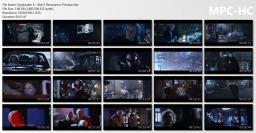| Welcome, Guest |
You have to register before you can post on our site.
|
| Forum Statistics |
» Members: 5,881
» Latest member: nomorend
» Forum threads: 6,011
» Forum posts: 86,244
Full Statistics
|
| Latest Threads |
The Muppet Christmas Caro...
Forum: Released
Last Post: wright96d
2 hours ago
» Replies: 0
» Views: 18
|
Introduction
Forum: Presentation
Last Post: Pixentric
8 hours ago
» Replies: 0
» Views: 17
|
Question about True Lies/...
Forum: Movies, TV shows and other
Last Post: Beber
Yesterday, 10:37 PM
» Replies: 1
» Views: 39
|
Terminator 2: Judgment Da...
Forum: Released
Last Post: paxiom
Yesterday, 09:35 PM
» Replies: 87
» Views: 71,383
|
Glad to be here
Forum: Presentation
Last Post: paxiom
Yesterday, 09:24 PM
» Replies: 0
» Views: 24
|
Introduction
Forum: Presentation
Last Post: volumizing
2025-12-21, 10:29 PM
» Replies: 0
» Views: 67
|
The Bourne Identity - The...
Forum: Released
Last Post: Vlaflip
2025-12-21, 12:44 AM
» Replies: 39
» Views: 13,683
|
Hello!
Forum: Presentation
Last Post: CSchmidlapp
2025-12-20, 05:02 PM
» Replies: 1
» Views: 99
|
introduction
Forum: Presentation
Last Post: hunterzolomon
2025-12-20, 12:47 PM
» Replies: 0
» Views: 79
|
PDB's Random Projects
Forum: In progress
Last Post: EndlessUniverse
2025-12-20, 04:31 AM
» Replies: 23
» Views: 6,387
|
|
|
| Resyncing audio from completely different masters, potential automation? |
|
Posted by: Mediahead - 2021-10-28, 04:51 AM - Forum: General technical discussions
- Replies (7)
|
 |
Hello, as the title suggests, I am wondering if there is any way I can somehow make audio synchronisation of two (almost)completely different sources a little easier, or if it really is completely necessary to do it all shot by shot, frame by frame? I know a programme that does this with subtitles that I have used with great success, I thought that would be harder than this, so I am a bit puzzled. Thanks in advance to whoever responds.
|

|
|
 Simple Single Source Logo Removal
Simple Single Source Logo Removal |
|
Posted by: Mediahead - 2021-10-28, 12:35 AM - Forum: Restoration guides
- Replies (18)
|
 |
Hello! I have been lurking this forum for a while, but today I have a technique I have created(I think I am the first) that I think could really help with a lot of projects. (it saved one of mine from abandonment  ) )
Whether you are trying to get an HD master of an obscure foreign film, or want something open matte, logos can be the bane of your existence.
pictured: the bane of your existence
Also: the bane of your existence, manually repainting frames or D.I.Y. matte painting! Or, trying to find original matte paintings.
Before I share I will list what is required (or at least, what I used.):
rm_logo (avisynth)
Topaz Video Enhance AI(although we will be using it for unintended purposes)
Any compositing software
Any image editing software
First, load your video into AVISynth (I use the staxrip variety), and use rm_logo as you normally would, creating a mask and all that. Since my logo(s) is transparent, I used deblend mode. I then ran
Code: MipSmooth(downsizer="lanczos", upsizer="bilinear", scalefactor=1.5, method="strong")
(default parameters for MipSmooth in staxrip) and crop()'d it down only to where the logo is.(I had to do this twice.)
Next, save that and drag the .avs file directly into enhance AI.
Select Proteus and change the parameters until the usual de-logoing artifacts go away, and it looks a bit like Peter Jackson got a hold of your clip (let's see how well that joke ages  )
![[Image: image.png]](https://i.ibb.co/qkFsS7P/image.png) These are the settings I used, and you can see the results here:
![[Image: image.png]](https://i.ibb.co/5F21qSp/image.png) (please excuse the poor cropping)
I saved this as an h.264 mp4 with a CRF of 12, but it doesn't matter too much.
Next, position your clip into the frame, and make a mask where your logos are. (this is so there isn't a jarring rectangle of smoothness)
Import your original logo-ed footage into the composition, and apply the mask.
![[Image: image.png]](https://i.ibb.co/Zh4Z75H/image.png) ...et voilà! Your video now has no logo!
(one last example):
![[Image: image.png]](https://i.ibb.co/2yk5kPf/image.png)
![[Image: image.png]](https://i.ibb.co/YyFnNwZ/image.png)
Now, I heavily recommend applying a grain plate or something similar over this, as you likely should for all HDTV rips, but other than that, you would agree it looks pretty good? Right? (hopefully, for my sake  )
I hope this is helpful to anyone who needs it, and thank you for reading my post! |

|
|
| Highlander 2 HD Restoration Preview (Work in Progress) |
|
Posted by: HippieDalek - 2021-10-24, 04:13 PM - Forum: In progress
- No Replies
|
 |
Work on my Highlander 2 HD Restoration has ended up being a bit slower than I'd hoped, with various other things eating into the limited time I have for the project, but I've finally completed enough of it to share this preview.
Using a combination of various sources, I've reconstructed the whole second reel of Highlander 2 in as high a quality as I can. Most of it is native HD from either the Russian 35mm print or Blu Ray, but sadly a few moments here and there still have to come from DVD.
The 35mm footage has been restored using mostly manual frame by frame clean up, and a bit of guided automated clean up here and there. The footage from Blu Ray and DVD has been colour matched to the 35mm, and I added a bit of light grain to try and merge the it in a bit better with the 35mm.
I happy with how the clean up has been going, but I still don't think I'm quite there with the colours. For now my plan is to start work on Reel 4 as it needs the least attention so will hopefully be a "quick" job, then probably Reels 5, 3, then 1. Once I've got them all cleaned up I'll concentrate more on getting the colours perfect.
The ~20 preview video also includes a subtitle track that shows what source is being used for each shot, but I ask that for your first watch just watch it normally, however you usually watch films, and let me know if you think it all fits together.
I've also included a very short demo video that shows a handful of before and after shots.
I had hoped I'd be at the stage of showing this off back in February, so I'm obviously really behind where I wanted to be, so I won't make any promises on when I'll be able to give the next update, but rest assured I'm still working on it.
PM me for a link.
I hope you enjoy, and please let me know if you have any feedback.

|

|
|
| True Romance - Quentin Tarantino Cut |
|
Posted by: JackForrester - 2021-10-24, 07:03 AM - Forum: In progress
- Replies (14)
|
 |
![[Image: a4d57267da5c6fbb992d15ea07a2a8f2c462fdbc...d5dd5128ac]](https://forums.fanedit.org/proxy.php?image=https://64.media.tumblr.com/7af7213e76bb431b7e9b8fd3dbf34677/68464faecf36a940-29/s1280x1920/a4d57267da5c6fbb992d15ea07a2a8f2c462fdbc.png&hash=a4bc38ee1f79b3e5e8a201d5dd5128ac)
As a big fan of the out of order structure of Tarantino's scripts I always wanted to give this a try. But some deleted scenes play a big part in his original vision of this and they were only available in pretty low quality. The special edition Arrow released recently brought the scenes still in SD but upscaled to 1080i, so the blend with the official HD footage doesn't look too jarring. And of course, Tarantino's original ending was reinstated, which I always preferred anyway.
The edit is pretty much done, I just need to export it and give it a final look.
For those not familiar with Tarantino's script of this film, here's the list of changes:
- No voice over of Alabama during the opening credits.
- Drexl killing his buddies for the drug in the hotel room moved to right after opening credits (inclusion of extended scene where they discuss 'eating pussy').
- Cliff arriving in his trailer and finding Clarence and Alabama waiting for him moved to right after the Drexl scene, first time we see the characters.
- Dick Ritchie's audition for TJ Hooker moved to right after Clarence says to Cliff that he needs his help.
- Cliff pissed off at Clarence after hearing his story moved to after Dick's audition.
- Deleted scene of Alabama telling Dick the story of her name added to the scene the trio is driving to the Safari Inn.
- After they arrive at the hotel and Dick asks Clarence what he's doing in LA, insertion of "A Few Weeks Ago" title card and we go back to when Clarence and Alabama meet at the movie theater. (note: no such card in Tarantino's script, but the conversation between them happens differently and it's made obvious the next scene will take us back in time).
- Deleted scene of Alabama cheering after the movie is over added after Clarence fills her in on what's going in the film (Jack Black's cameo was kept obviously).
- Deleted scene of Clarence showing Alabama how Spider Man #1 looks like added after he asks if she would like to see it.
- Deleted scene of Clarence asking Alabama to marry him and she accepting added after she promises she'll never lie to him again.
- Deleted scene of Clarence and Alabama in the bathtub talking about Janis Joplin added right after they get married. "Piece of My Heart" is now playing in the background as they are clearly listening to her music during the scene, and Tarantino's script lists that particular song. (note: in Tarantino's script that scene was supposed to happen during their first night together, only they're dancing in Clarence's room during the talk not in a bubble bath. I thought the bubble bath seemed like something they'd do in their honeymoon rather than in their first night together, so I moved the scene to later in the film).
- Right after they find out Clarence took the wrong suitcase and Alabama says "these are not my clothes" we go back to the Safari Inn where Dick sees the drug and Clarence asks for his help to sell it.
- Small deleted scene where we see Dick is appalled at how cool Clarence is with the whole situation he's in added right after they choose the rollercoaster as the meeting spot.
- Moved the scene of Virgil appearing at Dick's house and talking to Floyd to play between the scene post rollercoaster ride where Elliott is sick and Elliott and Clarence talking to Lee Donowitz on the phone.
- Deleted scene of Vincent Coccotti in the elevator with his gang intrigued at Virgil's disappearance and telling them to go find out what's going on and fix the problem added right after Dimes and Nicholson tell their boss about Elliott's bust and the drug deal with Lee Donowitz. (note: in Tarantino's script both scenes are intertwined, playing back and forth. I tried to edit them like that but didn't like the result so they play separately).
- Insertion of the title card "The Big Day" after Clarence assures Alabama everything will work out for them and before Floyd gives them directions to get to the Beverly Ambassador. (note: in Tarantino's script the tile card appeared before the Clarence and Alabama scene where he tells her he hates airports while he takes care of all the damage Virgil's done to her. I preferred the title card a little bit later, before they're ready to leave to the hotel).
- Deleted scene of Dimes and Nicholson giving more shit to Elliott added to the scene they're testing the wire in the hotel room.
- Deleted scene where Clarence changes his mind about selling the drug and decides to leave fearing they might get caught and then changes his mind again and decides to do it added right after Dick sees he brought a gun and asks him about it.
- Deleted scene of Elliott in the hotel lobby stretching as a way to calm down and concentrate added before the trio enter the lobby and spot him.
- Original ending reinstated.
|

|
|
| Remap AC3 channels losslessly? |
|
Posted by: alleycat - 2021-10-23, 07:52 PM - Forum: Audio and video editing
- Replies (2)
|
 |
Just checking if anyone knows of a way to remap the channels of an AC3 file without encoding? Is it possible to do this losslessly? Or do I need to convert to wav, remap and then encode as DTS HD or 640 kbps AC3 etc? Thanks
|

|
|
| DTS-HD MA 21ms delay when muxed on MKV |
|
Posted by: spoRv - 2021-10-21, 10:18 AM - Forum: General technical discussions
- Replies (14)
|
 |
I need some clarification about this.
So, let's say I have a M2TS file with a DTS-HD MA - let's assume it's in sync - and other audio tracks.
If I mux the audio and video streams into a MKV file, the DTS-HD MA would have a delay of 21ms - adding 21ms of silence in the beginning.
Now, if I mux back the streams into another M2TS file, would be the DTS-HD MA in sync again, or still retaining the 21ms delay?
And if I mux in another MKV, the delay would still be 21ms, or adds up and be 42ms?!?
|

|
|
| The Dark Side of Oz - HD 5.1 |
|
Posted by: stwd4nder2 - 2021-10-20, 09:44 PM - Forum: Released
- Replies (4)
|
 |
Since the dawn of home video people have been watching The Wizard of Oz while listening to Dark Side of the Moon. To make it a more cinematic experience I've taken the the 5.1 mix of the album and synced it to the blu-ray video.
This project starts with the film audio, fades into the album going through it about 2 and half times. I added a fade-out at the end, otherwise it just ends in the middle of a song.
I have it synced to the 70th Anniversary BD (with offset of -21ms as it's encoded in DTS-HDMA) as that's the only version I have. It might sync to other versions, and if I get a hold of any other versions I'll update this post with the required offsets.
PM for link.
|

|
|
|